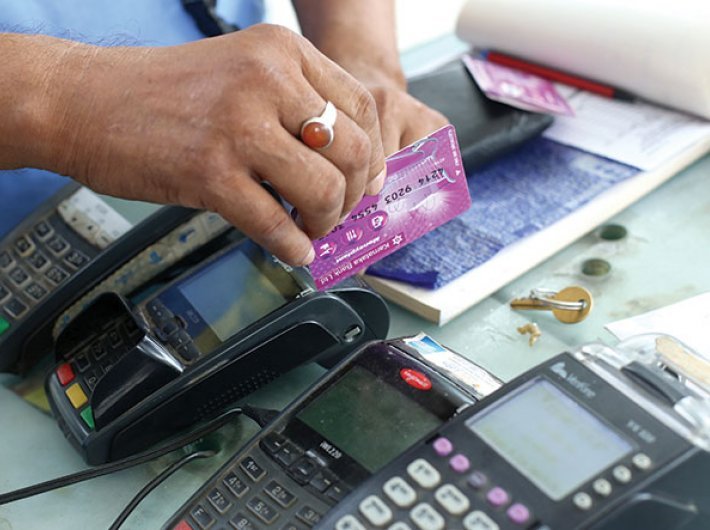When discussing digital currency, you might think of one or two well-known varieties. There is the digital representation of currency that you access with mobile and online banking services. This currency is the liability of a commercial bank. There is also cryptocurrency, a digital medium of exchange issued by private organizations. Cryptocurrency ownership and transaction records are stored on encrypted public ledgers.
However, it may not be long until a third variety of digital currency becomes just as well-known. This would be central bank digital currency, or CBDC. India has rolled out a CBDC pilot program, making it one of several nations to do so. In this article, we’ll explain what CBDC is and what its implications are for the public and private sectors.
What is CBDC?
CBDC is a form of virtual money backed by a central bank rather than commercial banks. This means that a central bank such as the Federal Reserve System of the USA or the Reserve Bank of India (RBI) would back CBDC as a liability. India’s CBDC is also referred to as e-rupee.
The e₹-R will take the form of digital tokens to be transacted through digital wallets on mobile phones. It is expected to share the same denominations as paper currency and coins, as well as their degree of anonymity. According to the RBI, all of the laws that apply to currency will apply to CBDC. The Economic Times reported that this is being made possible thanks to an amendment to the RBI Act.
Some consumers may wonder what the difference is between e-rupee and the unified payments interface (UPI) QR. In short, UPI transactions involve the consumer’s bank account balance, while e-rupee are transacted from a wallet.
Purpose and Advantages
CBDC can be thought of as a type of virtual cash. In that sense, it is expected to reduce reliance on cash. More importantly, it would reduce the costs associated with paper currency: printing it, storing it, and transporting it. However, it will have the same uses as cash, with users of CBDC able to make both person-to-person and person-to-merchant payments.
CBDC is also intended to streamline international payments made by consumers and institutions. With high-availability infrastructure in place, international transactions made with e-rupee should feature fast processing with reduced processing fees.
Finally, the advent of CBDC can be looked as an attempt to provide consumers with a centrally-backed alternative to cryptocurrency. Cryptocurrency has risen in prominence over the last decade, but crypto markets have proven to be volatile on the whole. With that in mind, it is understandable that governments would pursue an alternative digital currency.
Cyber Threat Management
As a worldwide payments and fintech hub, the Indian payments sector is fairly well-equipped to integrate CBDC. However, where there are digital transactions, there must be strong security measures. Encryption will be essential to protecting payment data at rest and in transit between users, merchants, and banks. This is especially true when protecting the digital wallets that store and transact e-rupees.
Digital signing will also come into play to authenticate identities, devices, and digital objects. Not only does digital signing ensure integrity, it alsobrings about accountability through non-repudiation, where neither party in a transaction can deny their role in it. Another technological consideration will be encryption key management. To effectively manage encryption keys is to ensure that your organization’s cryptographic infrastructure remains secure.
Cybersecurity experts in the payments sector are well aware that the best way to handle encryption, digital signing, and key management is through hardware-based cryptography. This includes hardware security modules (HSMs), key management solutions, and cryptographic management tools. These cryptographic solutions will only grow in importance as CBDC is implemented across India.
The Status of CBDC
Worldwide, 114 countries are currently developing CBDC programs, with 11 countries having launched them, according to the Atlantic Council’s CBDC tracker [https://www.atlanticcouncil.org/cbdctracker/]. Among those 11, India has fully launched pilot programs for the retail and financial sectors: CBDC-R and CBDC-W.
CBDC-R is for the retail sector. The user group includes both local merchants and national retail chains. Reliance Retail, the largest retailer in India, participated in this program. CBDC-W, on the other hand, is for the financial sector. Specifically, it is used to streamline interbank payments between different financial institutions. The W indicates “wholesale.”
RBI has identified eight banks for phased participation in the retail pilot project. The first phase includes State Bank of India, ICICI Bank, Yes Bank, and IDFC First Bank. The second phase will include Bank of Baroda, Union Bank of India, HDFC Bank, and Kotak Mahindra Bank. In the recent budget, the Minister of Finance stated that currency worth Rs 135 crore is already in circulation in the form of CBDC.
Conclusion
Currently, RBI plans to fully implement the e-rupee by the end of 2023. This would place India foremost among the world leadersof CBDC, and could show fairly immediate results. CBDC has unique advantages such as fast processing, cash-like anonymity, and central backing. It will be interesting to see the rate of adoption among the public and private sectors as the e-rupee is integrated into daily financial life.
Ruchin Kumar is VP – South Asia, Futurex.
